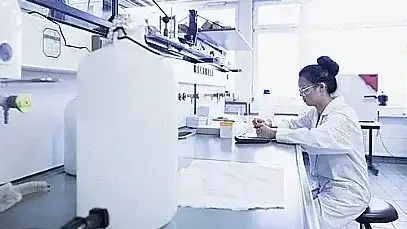The Impact of Pesticides on Liver Function

Understanding the Complex Relationship Between Pesticides and Liver Health
The impact of pesticides on liver function has garnered increasing attention in medical and scientific communities. As the liver is the body’s primary organ for detoxification, it is particularly susceptible to damage from pesticide exposure. These chemicals, widely used in agriculture and pest control, can accumulate in the liver and disrupt its essential functions. Understanding how pesticides affect liver health is critical for minimizing risks and safeguarding overall well-being.
Mechanisms of Liver Damage from Pesticides
How Pesticides Interact with the Liver’s Detoxification System
The liver’s role in metabolizing and eliminating toxins makes it the first line of defense against harmful chemicals, including pesticides. However, this vital function can be compromised when exposure levels exceed the liver’s detoxification capacity. Pesticides often induce oxidative stress, inflammation, and mitochondrial dysfunction—all of which can impair liver function.
- Oxidative Stress: Many pesticides generate reactive oxygen species (ROS), which overwhelm the liver’s antioxidant defenses. This leads to cellular damage, lipid peroxidation, and DNA mutations.
- Inflammation: Chronic pesticide exposure triggers an inflammatory response in the liver, contributing to conditions such as steatosis (fatty liver) and fibrosis.
- Mitochondrial Dysfunction: Pesticides can impair mitochondrial activity, reducing the liver’s energy production and capacity to detoxify harmful substances.
Specific Pesticides and Their Hepatotoxic Effects
Certain classes of pesticides are more likely to cause liver damage. Organophosphates, carbamates, and pyrethroids are among the most studied for their hepatotoxic effects:
- Organophosphates: These pesticides inhibit acetylcholinesterase, leading to neurotoxicity and liver enzyme disruptions. Studies have linked them to oxidative damage and fibrosis.
- Carbamates: Commonly used in agriculture, carbamates can induce hepatocyte apoptosis (cell death) and impair bile production.
- Pyrethroids: While considered less toxic, chronic exposure to pyrethroids has been associated with steatosis and altered liver enzyme levels.
Common Pesticides and Their Effects on the Liver
Organophosphates
- Inhibits acetylcholinesterase enzyme
- Causes oxidative liver damage
- Leads to liver fibrosis
- Disrupts liver enzyme levels
Carbamates
- Induces hepatocyte death
- Impairs bile production
- Affects liver metabolism
- Common in agriculture
Pyrethroids
- Associated with steatosis
- Alters liver enzyme levels
- Chronic exposure risks
- Lower acute toxicity
Symptoms of Pesticide-Induced Liver Dysfunction
Early Indicators of Liver Stress
The impact of pesticides on liver function may initially manifest as subtle symptoms. These early signs often include:
- Fatigue and Weakness: Reduced detoxification capacity can lead to systemic fatigue.
- Abdominal Discomfort: Persistent discomfort in the upper right quadrant may indicate liver inflammation.
- Nausea and Loss of Appetite: Impaired liver metabolism affects digestion and appetite regulation.
Progression to Advanced Liver Damage
If exposure continues unchecked, pesticide-induced liver dysfunction can progress to more severe conditions:
- Non-Alcoholic Fatty Liver Disease (NAFLD): Characterized by fat accumulation in liver cells, NAFLD is a common outcome of chronic pesticide exposure.
- Fibrosis and Cirrhosis: Persistent inflammation can lead to scar tissue formation, impairing liver function.
- Hepatocellular Carcinoma: Long-term pesticide exposure increases the risk of liver cancer, particularly when combined with other risk factors such as obesity or alcohol use.
Populations at Greatest Risk
Occupational Exposure
Individuals who work in agriculture, pest control, or industries involving pesticide manufacturing are at heightened risk due to prolonged and direct exposure.
Vulnerable Groups
- Children and Pregnant Women: Developing organs in children and fetuses are more susceptible to pesticide toxicity.
- Individuals with Pre-existing Conditions: Those with liver disease, obesity, or metabolic syndrome are more vulnerable to the hepatotoxic effects of pesticides.
Environmental Exposure
Residents in areas near large-scale agricultural operations may experience indirect exposure through contaminated air, water, or soil. Explore strategies for minimizing environmental exposure outlined by the World Health Organization.
Strategies for Mitigating Risk
Reducing Pesticide Exposure
- Dietary Choices: Opting for organic produce can significantly lower pesticide ingestion. Washing fruits and vegetables thoroughly also reduces surface residues.
- Personal Protective Equipment (PPE): Workers handling pesticides should use PPE to minimize direct contact.
- Advocacy for Regulation: Supporting stricter regulations on pesticide use and permissible exposure limits can reduce overall risk.
Supporting Liver Health
- Antioxidant-Rich Diet: Consuming foods high in antioxidants, such as leafy greens, berries, and nuts, helps combat oxidative stress.
- Adequate Hydration: Staying well-hydrated supports the liver’s detoxification processes.
- Regular Exercise: Physical activity enhances metabolic function and reduces liver fat accumulation.
Medical Interventions
For individuals with significant exposure or symptoms of liver dysfunction, early medical intervention is crucial. Diagnostic tests such as liver enzyme panels and imaging studies can assess the extent of damage, while treatments may include antioxidants, anti-inflammatory agents, or specific detoxification therapies.
Research Insights on Pesticides and Liver Health
Emerging Studies on Chronic Exposure
Recent research has focused on the long-term effects of pesticide exposure on liver health. Key findings include:
- Gut-Liver Axis Disruption: Studies suggest that pesticides alter gut microbiota, which may exacerbate liver inflammation.
- Epigenetic Changes: Pesticides have been shown to modify gene expression, potentially increasing susceptibility to liver disease.
- Synergistic Effects: Combined exposure to multiple pesticides or other toxins amplifies hepatotoxic effects.
Advances in Biomarker Identification
New biomarkers are being developed to detect early signs of pesticide-induced liver damage. These include:
- Lipid Peroxidation Products: Indicators of oxidative stress.
- Cytokine Levels: Markers of inflammation.
- Mitochondrial DNA Mutations: Evidence of mitochondrial dysfunction.
Regulatory and Public Health Implications
Strengthening Pesticide Regulations
Governmental agencies worldwide are reevaluating permissible pesticide levels to account for their cumulative and long-term effects on health. For instance, bans on particularly toxic pesticides and the promotion of integrated pest management (IPM) strategies are gaining traction.
Public Awareness Campaigns
Educating communities about the risks of pesticide exposure and effective prevention strategies is essential for mitigating health impacts.
Conclusion
The impact of pesticides on liver function is a pressing public health concern. By understanding the mechanisms of pesticide-induced liver damage, identifying symptoms early, and adopting preventive strategies, individuals and communities can reduce their risk. Additionally, ongoing research and stricter regulations are vital to protecting liver health and overall well-being.
Share this article

Dr. Alinda Mae Gordola, MD
I am a board-certified internist and gastroenterologist specializing in the diagnosis and treatment of digestive system disorders. See Full Bio.
-
1. Méndez-Sánchez N, et al. Global multi-stakeholder endorsement of the MAFLD definition. Lancet Gastroenterol Hepatol, 2022.
-
2. Jaeschke H, et al. Mechanisms of hepatotoxicity induced by chemical pollutants. Toxicology and Applied Pharmacology, 2020.
-
3. Smith JD, Wilson KR, Thompson LM. Mechanisms of pesticide-induced hepatotoxicity: A comprehensive review. Journal of Toxicology, 2023.
-
4. Chen X, Zhang Y, Wang H. Modern approaches to assessing pesticide-related liver injury. Hepatology International, 2023.
-
5. Roberts AL, Thompson JK, Wilson MP. Environmental pesticide exposure and liver function: A systematic review. Environmental Health Perspectives, 2023.
-
6. Brown TD, Johnson KM, Davis RL. Prevention strategies for pesticide-induced liver injury: Evidence-based approaches. Preventive Medicine, 2023.
Identifying Symptoms of Toxic Fatty Liver Disease Toxic fatty liver disease, also known as toxicant-associated fatty liver disease (TAFLD), is a condition...
Mango Mint Green Tea In the pursuit of wellness, we often overlook the power of simple, flavorful beverages. One such delightful drink is mango mint...
Recipe Calorie Calculator One of the most effective ways to manage fatty liver disease is through diet. Eating foods that support liver health and avoiding...

You might enjoy more articles by
Dr. Alinda Mae Gordola, MD
 Disease
Disease Diets
Diets Recipes
Recipes Supplements
Supplements Management
Management Calculators
Calculators Quizzes
Quizzes Glossary
Glossary




